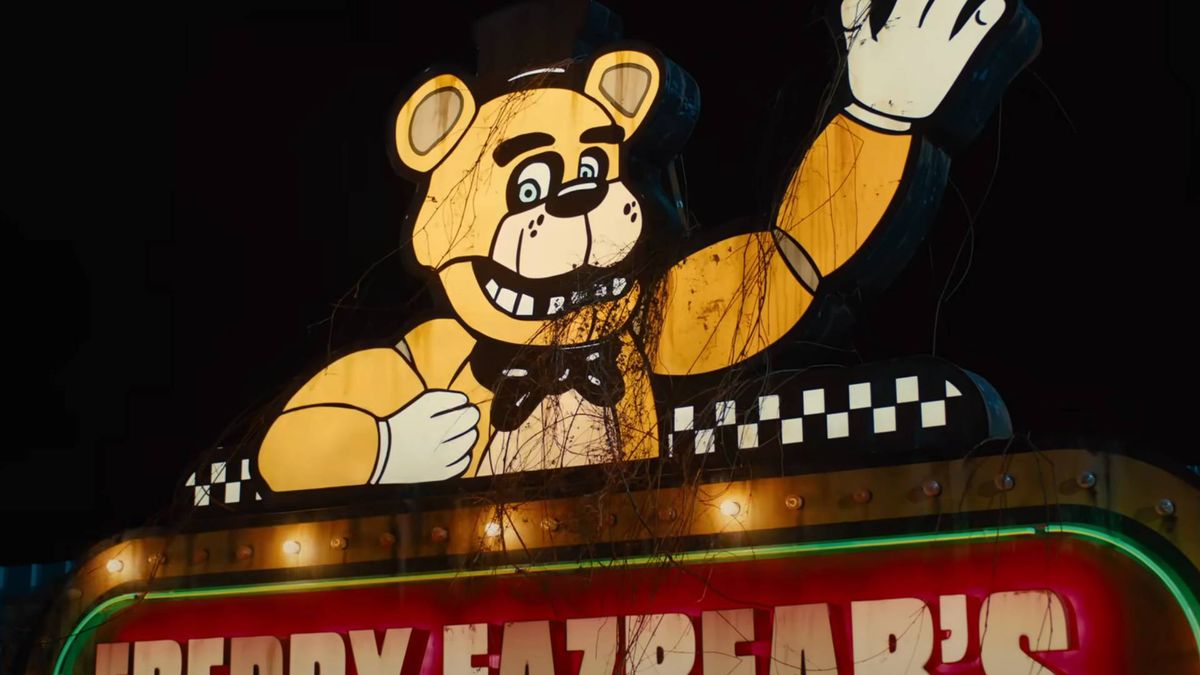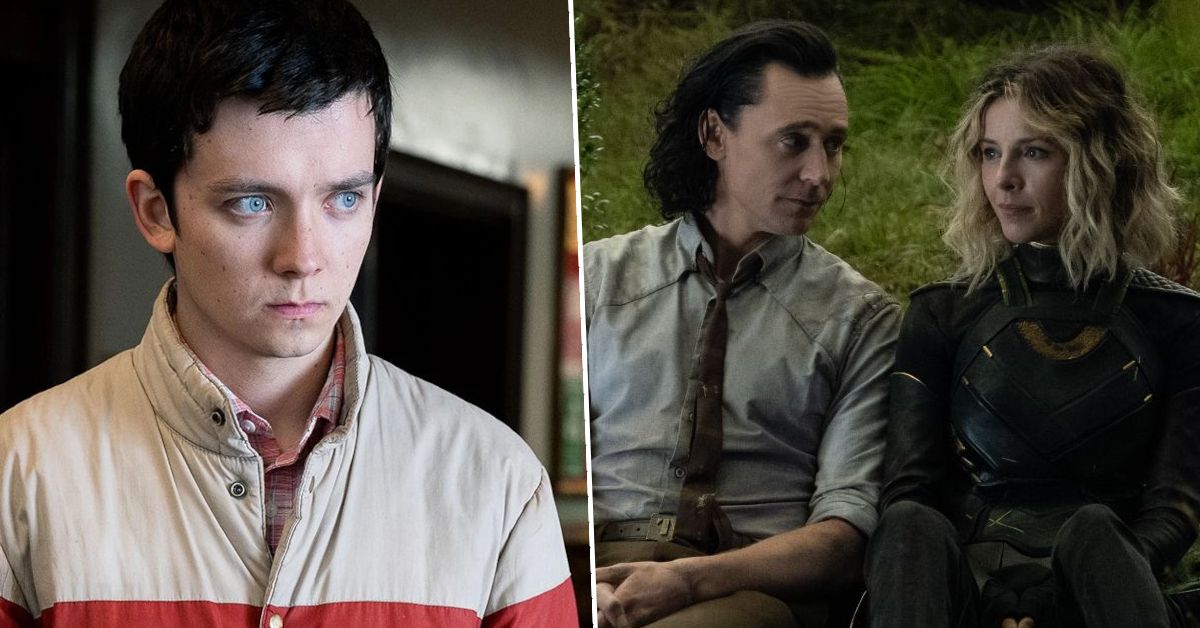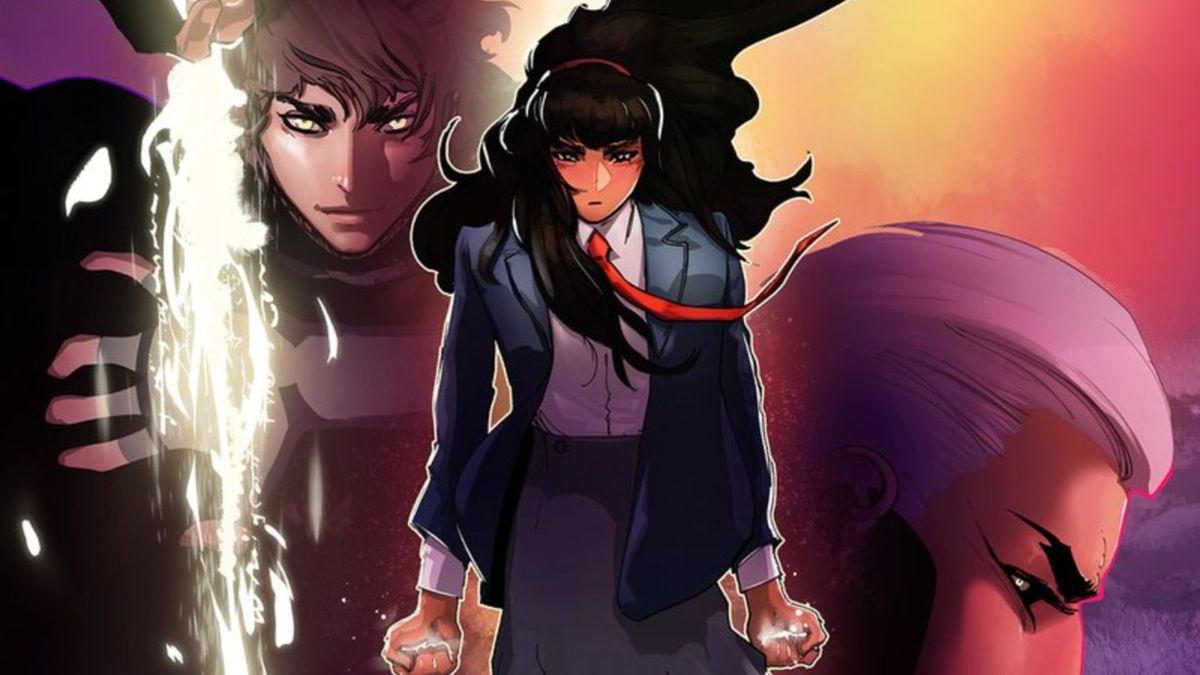Sometimes a cover just stays with you. It might be the iconographic image of Captain America punching Hitler; it might be the crazed Silver Age covers of DC books with Superman, Batman, and company being transformed into everything from gorillas to funhouse-mirror images to that one with the Flash going, “I’ve got the strangest feeling I’m being turned into a puppet!” It might be those gimmick covers with foil enhancements, all shiny and chrome.

(opens in new tab)
Or it might be a perfectly ordinary comic book featuring a dolphin with an Uzi.
Not to mention a shark with a frickin’ laser beam attached to its head that predated Austin Powers by seven years.
In 2018, Marvel reprinted that bizarre story: Brute Force (opens in new tab), an obscure four-issue 1990 series that few have read, but many have remembered. A comic book that, even by the standards of comic books, is a profoundly strange mixture of ideas – a group of animals given cyber-suits that let them talk and handle weapons, ranging from Surfstreak (the aforementioned uzi-strapped dolphin) to Lionheart (the, well, lion) to Hip-Hop (the jive-talking cybernetic kangaroo) created and assembled to … save the environment.
Yeah, we’re not sure how that was supposed to work either.
For decades, those who’ve seen this book, including this writer, have expressed reactions ranging from, ‘That’s not real!’ to ‘That was a cartoon, right?’ to ‘That is awesome.’ Now, with another revival coming in 2022 as a digital-first Infinity Comics title on the Marvel Unlimited digital comic book service, we’re revisiting our oral history originally published in 2018 with the people behind the original Brute Force to represent the true story behind one of the weirdest Marvel books ever, even in an era that also gave us NFL SuperPro, Street Poet Ray, and that one-off where Billy Ray Cyrus became a time-traveling warrior.
This is the true story of Brute Force, straight from those responsible.
How did the series come about? The creative team…wasn’t sure.
Simon Furman (writer, the original limited series): You should definitely speak with Bob Budiansky. He was the main instigator of Brute Force.
Bob Budiansky (former Marvel Comics writer, artist, inker, colorist, letterer, and editor): I do not believe the concept originated with me. I’m fairly certain it originated with Marvel editor-in-chief (at that time) Tom DeFalco. Perhaps Simon or I tweaked the initial concept a bit, but I think Tom primarily wrote the bible for it.
Tom DeFalco (former Marvel Comics editor-in-chief): I’m afraid too many years have passed, and I don’t recall anything about Brute Force. I don’t even remember what the characters look like. Sorry.

(opens in new tab)
Jordan D. White (editor, Brute Force revival appearance): Tom Brevoort was actually the assistant editor on the original series, so he would know more.
Tom Brevoort (executive editor, Marvel Comics): To be honest, I was only the assistant editor on this series, and I believe that the intention to publish it was already in place by the time I had started at Marvel. So, I don’t really know much of anything about the development process or the deal-making process, sorry.
So … yeah.
After some searching, Newsarama found the actual creator of Brute Force, Charles Viola, who in 2018 ran a web design firm in Fairfield, Iowa. He provided some information he sent to Marvel to run in the new collection.
In 1988, Viola, then in the toy industry, came to Marvel Comics with some designs for toys that could work in cartoons and comics.
One caught Tom DeFalco’s eye, even if he doesn’t remember.
Charles Viola (creator of Brute Force): It was a PhD-level dolphin scientist with bionic arms and legs, an armored suit complete with a portable hydration system, and a digital device that translated his dolphin squeals into human speech (and vice versa) so that he could communicate with humans. I had originally conceived him to be a member of a United Earth Force in a story set in a future time.
Viola dug out his original designs, shown here along with all the other characters, including many that didn’t make it into the series.
Image 1 of 9
Image 1 of 9
sketches presented courtesy and with permission of Charles Viola
Image 1 of 9
Image 1 of 9
Image 1 of 9
Image 1 of 9
Image 1 of 9
Image 1 of 9
Image 1 of 9
Image 1 of 9
For everyone who’s ever wondered if Brute Force was based on a cartoon or toy line…that was kind of the whole point.
Simon Furman: I was approached by Marvel’s Bob Budiansky [who] told me Marvel was taking the Transformers model in reverse and instead of basing comics on a toy line, we’re creating a comic specifically designed to be turned into a range of toys owned or licensed by Marvel. I guess they were tired of creating all this great backstory and character/story stuff that they didn’t own.
Bob Budiansky: I think the idea […] was to reverse-engineer the success Marvel had with developing toy company properties into successful storylines and comics, such as Transformers and G.I. Joe.
So, instead of waiting for a toy company to come to Marvel, license Marvel its newest toy and ask Marvel to develop its storyline, Marvel set out to originate an idea that it could then license for toys, animated TV series, etc. while maintaining ownership of it.
The four-issue Brute Force mini-series would basically serve as a printed sales pitch to prospective licensing partners. As the editor of the book, I wasn’t involved in that end of things, but apparently, Marvel found no takers.

(opens in new tab)
Furman, who had a long and acclaimed run writing Transformers for Marvel after Budiansky, was re-teamed with his artist on that book, Jose Delbo.
Simon Furman: Brute Force had already been largely conceptualized, designed, and branded by the time I came on board. All I had to do was devise a storyline to support what we already had.
The effect of the toy-based designs combined with Delbo’s more realistic style gives Brute Force a certain unsettling quality. The cyber-suits are very clearly designed around the limited articulation of a 1990-era action figure, while the animals look like…well, animals you’d find in the real world.
Everything about the design and characterization of the animals was done in an attempt to make them relatable and, at least for the heroes, heroic to a comic-buying audience.
So, having them talk, giving them emotions – all of that is to encourage the readers to identify with these creatures, which was a challenge because let’s admit the obvious – they weren’t human!
Jose Delbo: It was definitely a strange challenge for me. I don’t see animals as good or bad, so it was a little bit odd to draw them that way. I believe the concept of animals being good and bad is what makes it an interesting idea.
Bob Budiansky: That’s Jose’s style. He draws fairly realistically. When I hired an artist, I expected him to draw in the style he was comfortable drawing, not in a way that he didn’t typically draw. I was very familiar with Jose’s style from working with him on the Transformers comic a couple of years earlier, so he gave me exactly what I expected and wanted. I think he gave those animals a lot of personality, which isn’t an easy thing to pull off.

(opens in new tab)
The book’s premise wasn’t easy to pull off either.
Simon Furman: I think we were all aware that animal experimentation is not a crowd-pleasing, bums-on-seats concept.
Essentially – Brute Force is comprised of animals that have been experimented on. So, apart from the natural fit of an eco-conscious credo, their global mission to protect the environment and thereby their fellow species leavened some of that sense of animals being jammed into metal suits and having their intelligence artificially boosted. This was quite early for this kind of ‘save the world/protect the environment’ underpinning ethos (and not just in comics) and to a certain extent it felt like we were trailblazing, albeit in a ‘softer,’ kid-friendly kind of way.
Most of all, we wanted these characters to be fun and have personality. Bob had already done an amazing job of turning angular robots from another planet into relatable, well-rounded, and believable characters, and much of the slog in terms of the character work had already been done on Brute Force by him and Charles Viola – and many others from that Marvel think-tank. But I then tried to turn that development into a character-led story on the page, and in doing so I hope I brought more to the characters than their initial potted bios.
They make about as much sense as giant robots that turn into cassette tapes, I guess.

(opens in new tab)
Unlike those robots in disguise, Brute Force didn’t prove a long-running success.
Tom Brevoort: First and foremost, there wasn’t a toy line and there wasn’t an animated series or commercials to help generate interest in the larger world. So Brute Force was just a limited series, released with little fanfare into a competitive marketplace.
Bob Budiansky: Comparing Brute Force to the Transformers […] I would suggest several reasons why Transformers proved more successful: 1.) Better concept. 2.) Nationally distributed toy brand from a major toy manufacturer. 3.) Nationally televised animated series. 4.) Multi-million-dollar ad budget. These were all things, particularly the last three, that Brute Force lacked. Marvel had some clout in the marketplace, but not as much clout as Hasbro, and certainly nowhere near the clout Marvel has today.
Simon Furman: Brute Force was pitched quite young – younger in many ways than even the Transformers originally. And I think ‘serious’ comic fans were quite dismissive and sniffy about Brute Force. Anyway, sales figures were not breathtaking…but probably would be by today’s standards. I never quite understood why it came out under the main Marvel banner, and not their junior sub-imprint at the time – Star Comics.
I think younger kids – and their parents – didn’t know it was for them, and regular (older) readers didn’t want it. I don’t think there’s anything intrinsically wrong with the concept, and it’s even more relevant today in some ways, just the way it was marketed. And Marvel itself, at a management level, was going through changes and Brute Force just slipped through the resultant gaps.
More than a decade after Brute Force came out, the concept of animals in cyber-suits resurfaced in the Vertigo limited series WE3 by Grant Morrison and Frank Quitely (opens in new tab), an acclaimed work that has remained in print with occasional talk of a film adaptation.
Simon Furman: WE3 was great. I loved it. And it showed me that had we aimed older with Brute Force and treated it as a proper ‘Marvel’ action-adventure comic book, we may be having an entirely different chat today. And even though it lampooned them mercilessly, I really enjoyed Brute Force’s Deadpool Annual appearance. It made me laugh.

(opens in new tab)
That’s actually 2014’s Deadpool Bi-Annual #1 (opens in new tab), Brute Force’s last original appearance in which they did what most Marvel Comics characters did in the 2010s – team up with Deadpool.
Paul Scheer (actor/writer/comedian/podcaster/writer of Brute Force’s 2014 Deadpool Bi-Annual #1 appearance): Ha! I love WE3, but honestly – too many emotions, not enough explosions. Also, has Grant Morrison done anything else after that? I mean, talk about a one-trick pony.
Note: Since I’m fully aware that jokes don’t read in print – I will disclaim – This is a joke.
Back to Brute Force…
Paul Scheer: I grew up with dolphins with uzis. So that wasn’t shocking. The fact he could drive…now, that was interesting, but to get back to your questions, my writing partner, Nick Giovannetti and I were pitched these characters by Jordan White. Nick knew a little bit about them, but Jordan was obsessed with bringing them back into the fold.
Jordan White: Basically, some of us assistant editors saw the covers for Brute Force online and could not believe such a bananas thing actually existed and we’d never heard about it. I believe it was Sebastian Girner who actually first showed them to me. From there, I think it was just a race to see who would bring them back first. I was lucky that I was able to make it happen in Deadpool!
Paul Scheer: Reading the original books was a chore. It was like reading Captain Crunch fan fiction. These were reversed-engineered toys, and it wasn’t like they had Garth Ennis cranking these out. So, Nick and I used the fact they were so underdeveloped to actually reinvent their personalities.
Nick and I come from an ’80s action movie background, and it was really fun to create our own animal A-Team. We tried to treat them as real characters first and foremost. We didn’t want to lead with camp. We thought the only thing that would make this work is if we respected these characters and really tried to find unique voices and POVs.

(opens in new tab)
That tongue-in-cheek Deadpool guest appearance remained the last we saw of Brute Force…at least until the 2018 collected edition and now in an upcoming new Infinity Comics story (previewed on the right, click it, it gets bigger). Which seems to suggest … something about the concept stays with people.
As to the creators’ thoughts on that idea in 2018…
Bob Budiansky: I’m completely surprised that the mini-series has been reprinted. I don’t believe Brute Force attracted much of an audience when it was originally printed, so I can’t imagine there’s much of an audience for it today. But I’m all for giving the series a second life, and if Marvel thinks it can sell enough copies of the collection to make it worthwhile to reprint, who am I to argue? As for whether it should be rebooted… I really don’t care.
Simon Furman: I’m very happy to see Brute Force back in print. I kind of hope it finds a new, maybe more appreciative audience this time around.
Jose Delbo: I hope (the reprint) is successful. I find it exciting when people bring me the book to sign at the various cons. I believe the concept of animals being good and bad is what makes it an interesting idea.
Charles Viola: What’s interesting to me is that 28 years after those four Brute Force issues came out, people are still talking about them. Some comic fans love Brute Force. I’ve heard it called ‘awesomely insane,’ while others have said it’s the dumbest thing they’ve ever seen. At least one blogger has rated Brute Force among the strangest comics of all time. I kind of like the fact that the Brute Force concept has generated such a wide and strong reaction. The last thing you want to be is ordinary and mediocre.
Paul Scheer: Seriously, it’s incredibly flattering (to be reprinted). Writing a Marvel book was such a dream come true, and to be able to work with such infamous characters was really a fun challenge. We’ve been lucky to get a few opportunities in the Marvel world and hopefully, we’ll get to do it again and who knows – maybe Brute Force returns.
Tom Brevoort: I find it delightful when anything that I worked on long ago gets reprinted, in particular things like Brute Force that have largely seem to have been forgotten. And absolutely the characters could make a comeback, that’s one of the great things about the Marvel Universe.
It wasn’t all that long ago that Squirrel Girl was a one-shot character who had appeared only once and was remembered with derision and some scorn, and now she’s the star of a successful comic book series, animated movie, and appearing on all sorts of merchandise.
So, you just never know…
[Newsarama Note: Thanks to Jonathan Morris for the scans of Brute Force from the original single issues.]
Sorry Brute Force, but none of them were selected as the best new Marvel character that debuted in 1990. That was Cable. Read the rest of Newsarama’s list of the best new Marvel character that debuted each year from 1990 to 1999.
 Games News games, movies and TV you love.
Games News games, movies and TV you love.



